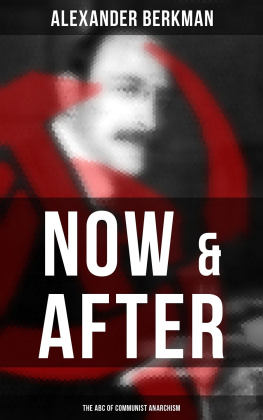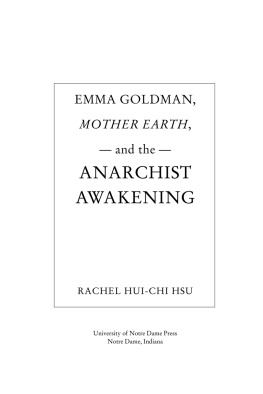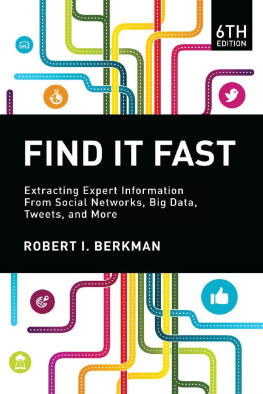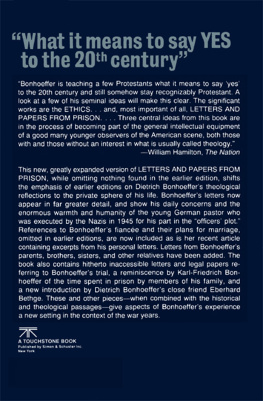*Oscar Wilde, The Ballad of Reading Gaol (1898), lines 541546.
Introduction
Alexander Berkman was released from the Allegheny workhouse in Aspinwall, Pennsylvania on May 18, 1906. He had been there for nine months, since July 1905, and prior to that had spent nearly thirteen years in the Western State Penitentiary near Pittsburgh. He had, during this fourteen year stint, attempted to kill himself twice, and considered his own mortality regularly, I stand on the brink of eternity as he describes it. Never a model prisoner, he had survived years of solitary confinement, including one period of sixteen months and another for just under a year after the discovery of the tunnel dug to aid in his escape from prison. There had been numerous shorter stretches in solitary as well. Berkman was regularly subjected to other emotional and physical punishment: he had served time in the basket cell where hardly any light entered, and been starved on what was called the Pennsylvania dietone slice of bread and one cup of black coffee a day, with thin vegetable soup once a weeka diet that would cause him to suffer digestive and stomach problems for the rest of his life. Berkman had also lost friends among the prisoners; some, like Wingie, who adopted him when he arrived, were driven mad by prison, others killed themselves or withdrew into a brooding silence, hunched like wounded animals. Apart from the prison chaplain, John Milligan, these men were the only people to show him kindness and offer him constant and shared emotional support. When Berkman walked out into the brightness of that May morning, he was emotionally damaged, fearful, terribly insecure, and prone to depression. No one could lightly shrug off what had happened to them in that institution, and much of Berkmans future life would be a struggle between who he was, or wanted to be, and what the Western State Penitentiary had do ne to him.
His prison experience had been a confusing one that he himself could, at times, only barely come to terms with. Commentators on Prison Memoirs of an Anarchist have tended to see it as a journey from revolutionary naivet and fanaticism to mature experience and commitment. Although it is worth considering this interpretation again, the journey may well have been far more complex than that. Certainly when Berkman, aged twenty-one, climbed the stairs to Fricks office on the July 23, 1892 he was acting as he imagined the real life heroes and heroines of Naradonaya Volya had acted as they embarked on their war against the Russian state. Like his heroes, he saw himself carrying out actions in the name of the people who, at the very least, would understand and appreciate what he had done.
Berkman had been drawn to anarchism by the execution of the Haymarket anarchists, been a member of the Jewish anarchist group Pionere der Frayhayt (Pioneers of Liberty), worked with Johann Most on his paper Freiheit, and, finally gravitated to the autonomists around the Radical Workers League. He found his home in their anarchist communism and belief in the efficacy of non-hierarchical affinity groups that embraced militant tactics to achieve their endsa society predicated on the maxim of from each according to their ability and to each according to their need. However, by his own admission, at the time of the Pinkerton raid into Homestead on July 6, 1892 Berkman had essentially dropped out of anarchist activity. He and his comrade Modest Stein had explored, with the help of Johann Most, the possibility of returning to Russia and playing a role in the movement there. From winter 1891 to summer 1892 they had been living with Emma Goldman in Springfield and then Worcester, Massa chusetts.
The events of Homestead drew him back into political life and, together with other anarchists of the Radical Workers League, he planned the assassination of Henry Clay Frick initially by bomb and then by gun or dagger. Here was a man who manifestly deserved to die because of his treatment of the Homestead workers. A man who had locked out his workers and hired armed detectives against them rather than negotiate with the union. And here, at last, were workers arming themselves against the authorities to achieve their goals. The time was right to act and the air seemed alive with possibility. Of course Berkman could not write, in Prison Memoirs , of others involvement in the assassination attempt. Better to portray himself as a lone assassin, as he did when arrested, than implicate his comrades, some of whom, by 1912, had dropped away from the movement. Somehow, one feels, that this scenario rather suited Berkman; for much of his life he saw himself as a man aparthowever much he was central to a group around a cause or a paper. Of course when Berkman did climb the stairs to kill Frick he wasnt quite alone. He had registered at a hotel on July 22 as Mr Rakhmetov. A central character in N.G. Chernyshevskys 1863 novel What Is To Be Done? , Rakhmetov walked beside Berkman that day. It was Rakhmetov, the ascetic and driven revolutionary who Berkman consciously admired and emulated. He turned to Russian literature and Russian history for his role models on that July morning. They provided him with a tradition he could understand and b elong to.
This tradition also gave Berkman a revolutionary script he could followone that had been followed by many young radicals before him. If captured, the militant or militants would use their trial to announce to the people why they had carried out their act. If sentenced to death, they would die bravely and, if sentenced to prison, they would try to kill themselves and engage in as many escape attempts as they could. But Berkmans trial was a farce; he couldnt speak English and his interpreter wasnt up to the task. This coupled with his refusal to engage legal counsel and his lack of legal knowledge meant he couldnt explain himself at his trial and was handed down a sentence far longer than it should have been. The day after his attempt on Frick, he had attempted to kill himself by chewing a dynamite cartridgethe influence of Haymarket anarchist Louis Lingg there for all to see. After his sentence, he urged Emma Goldman to bring him the gift of Lingg. When that didnt work, plans were made for the anarchist Dyer D. Lum to bring poison into the prison to help Berkman die. Lum had previously smuggled into Cook County Jail the dynamite cartridge that Lingg used to blow his face off, yet this particular revolutionary symmetry was denied Berkman by the difficulty of getting the poison into the prison. Voltairine de Cleyre was supposed to have brought poison into the Western State Penitentiary after Lum committed suicide in 1893, but that plan too foundered. All that was left for him, then, w as escape.
From the moment he entered Western State Penitentiary thoughts of escape had been swirling through Berkmans mind. Very few had managed, even if many dreamed about it, and it wasnt until 1899 that a real plan could be put into motion. With money pulled together from various sources by Emma Goldman, a house was rented in a street next to the prison and a tunnel was dug from the house towards the prison. Eric B. Morton led the operation with the help of Italian anarchist miners, Vella Kinsella, Harry Gordon (Yankee) and, above all, Tonya recently released gay anarchist prisoner who had helped draw up the technical specifications. Emma Goldman left for England on a speaking tour and then to attend the International Revolutionary Congress of the Working People in Paris in September 1900, and Berkman was to join her in Europe. The tunnel was discovered on July 26, 1900. It was Eric B. Morton, rather than Berkman, who fled for Europe. Prison authorities could not be certain of Berkmans involvement in the tunnel operation but he was one of their major suspects and was placed once again in solitary. After this devastating blow, in July 1901, Berkman would again attempt to take his own life. Matters were eased with a shortening of his sentence and that, coupled with Berkmans sheer strength of will, kept him going until that May morning in 1906 when he walked into the free air. Unlike his Russian comrades, who had an astonishingly high rate of attrition, Berkman had survived prison and planned to devote his life to anarchist thought and action. There wasnt really a script for being a survivor. He was o n his own.









